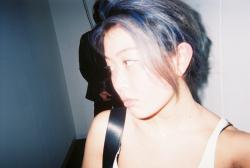The Pink World of Portia Munson at Bedford Gallery
Once you enter the pink world of Portia Munson at Bedford Gallery, you might get lost in it. “Her Room/Her World” is the artist’s first solo show on the West Coast, and consists of thousands of discarded pink objects. The great majority of these products were originally created for and marketed to women, and Munson uses them to create immersive, visual overloads that question mass seduction and consumption. Read more about her world (and her thoughts on millennial pink!) in the interview below.

“Pink Project: Bedroom,” 8ft high x 16ft wide x 20ft deep, found pink plastic objects, pink synthetic clothes and salvaged bedroom furnishings (1994 – 2018).
Hi Portia! Your work approaches environmental and cultural issues like consumerism from a feminist perspective. Does it contain a specific message related to either of those subjects?
Yes, there is way too much plastic stuff that we are buying all the time. My work is made up of this castoff stuff which I organize and assemble into artworks. The stuff itself comes loaded with meaning and through amassing, framing and organizing it into artworks and installations, cultural and environmental themes emerge and resonate.
“Bedroom” contains thousands of pink objects, how long does installing that piece typically take?
It takes a full eight days or more.
Check out the installation at Bedford Gallery:
How do you know when your installation is finished?
In a way, they are never finished. So, they’re done when I run out of time and the exhibition is opening.
How do current social issues relating to gender identity (gender nonconformity and/ or gender fluidity) fit into the context of your work?
When I first started working on the Pink ‘Bedroom’ in the early 1990’s, ideas around gender identity were quite different then they are today. I want my work to be open to all and also open to interpretation.
Now, we have more companies run by women and a call for greater transparency in our advertisements. Have marketing campaigns that use femininity changed since you started the Pink Project in the early 1990’s? Do these changes appear in or affect your work?
Yes, the pinks today are bolder and often feel more powerful or assertive and less passive. This shift is affecting my work as I continue to collect objects that are made more recently and make work from this new pink stuff.
Do you have a favorite shade of pink?
I like the pink that is created when many of the found pink things are seen together, the pink glow that emanates.
“Millennial pink” is a popular trend right now — there’s something attractive about the color to young people. What do you think that’s fueled by?
I think it’s a somewhat rebellious act of transforming this color that has been thought of as passive into something powerful and owning it: ‘FU, I like this and its mine.’

“Her Coffin,” glass box 22.5in wide x 14.5in high x 70in long, found pink plastic objects, tempered glass and table (2016). “‘Her Coffin’ is made up of small pink plastic disposable objects arranged in graduated shades and encased in glass. With this piece, I’m thinking about the toxicity of plastic and its impact on our bodies.”
Tell me about five of the weirdest discarded objects that you’ve found (and used in your work)? Is there anything that stands out in particular?
Some of the weirdest things to me are things that we have come to think of as normal. For instance, a fork made of pink plastic, a pink plastic tampon applicator, or a pink styrofoam tray for meat. It’s weird to me that these “normal” things are made in the color pink. This is part of what inspired me to collect pink stuff in the first place. But, here’s an example that’s more along the lines of what you were expecting. Recently a stranger in Kansas sent me something they had found on the street: a pink plastic baby toothbrush in the shape of a peeled banana.
Is there anything else that you’d like to say?
In my mind, the environment and our relationship to the earth is the most important issue of our time. By the early 2000’s I began to think of the Pink Project as environmental works. More recently the carcinogenic quality of plastics has become very apparent and important and is what inspired me to make the sculpture ‘Her Coffin’.
I don’t want to be a consumer of the given options. We are all creating or making up our lives, so why not make it a really good one? Make it healthy, beautiful and thoughtful. We are the future of the culture!
All images courtesy of the artist.











